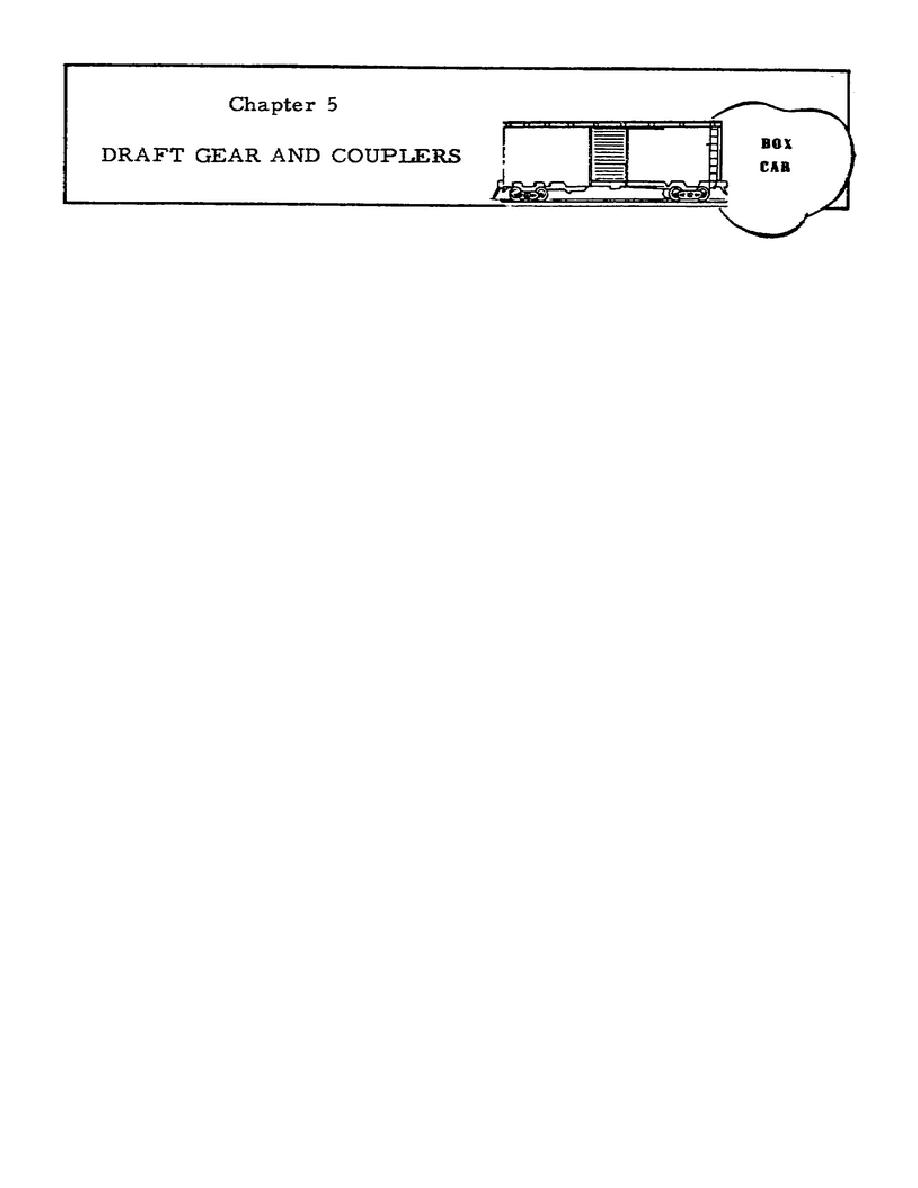
5.1. INTRODUCTION
Railway cars are made up into trains. They are connected end to end or, in railway jargon, coupled. The
devices used in the coupling, pulling, pushing, and uncoupling processes are the draft gear and coupler. The
draft gear is connected to the car underframe and seated in the center sill pocket. It receives and reduces the
shocks and pulling stresses before transmitting them to the car body. The coupler is attached to the draft gear.
This chapter discusses, first, the draft gear and coupler used in the United States; and, second, those found
on rail equipment in foreign countries.
5.2. DRAFT GEAR
The draft gear connects the coupler to the car underframe and cushions the shock caused when cars are
coupled or train speed is suddenly changed. A certain amount of slack is purposely left in the couplers of a
standing train so that it can be started one car at a time. Cars are usually coupled at a speed of about 5 miles per
hour. You can imagine what would happen if a heavily loaded freight car, standing on a siding, was struck in
the coupling by a group of cars moving at 5 miles per hour with a solid connection between the coupler and the
underframe. Something would have to give! It is at the end of this run-in and run-out of slack that the shock
occurs; the draft gear, placed between the coupler and the underframe, is designed to cushion such shocks. The
two basic types of draft gear used in the United States are the friction and rubber.
5.3. FRICTION DRAFT GEAR
All types of friction draft gear have two major parts contained within a housing: a unit of coil springs and
a friction unit. Figure 5.1 shows three different kinds of draft gear, and figure 5.2 is a diagram showing the
internal parts of two types. Notice that
63


 Previous Page
Previous Page
